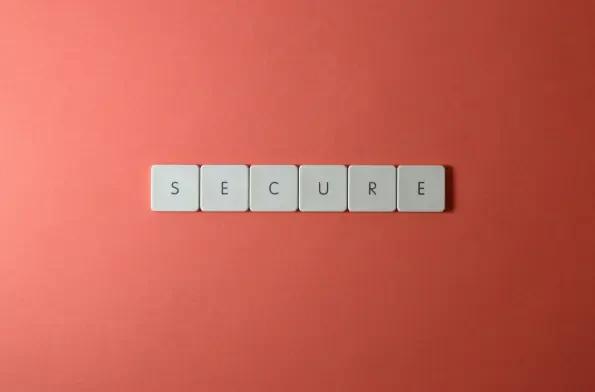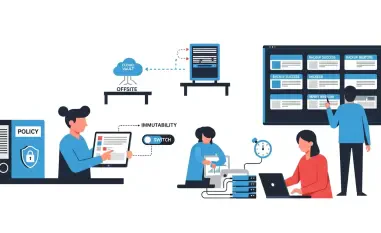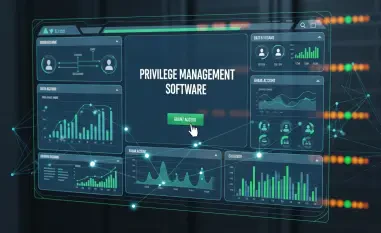The digital landscape is buzzing with concern over a critical security flaw in Redis, an in-memory database used by roughly 75% of cloud environments, and this issue has sparked widespread alarm due to its potential impact. Dubbed “RediShell” and identified as CVE-2025-49844, this vulnerability carries a perfect CVSS score of 10.0, signaling its potential for catastrophic damage. With hundreds of thousands of Redis instances exposed online, the stakes couldn’t be higher for organizations relying on this technology. This roundup gathers insights, opinions, and actionable tips from various industry perspectives to unpack the severity of the RediShell flaw, explore differing views on its implications, and provide guidance on safeguarding systems.
Unpacking the RediShell Threat: What Experts Are Saying
Technical Breakdown and Initial Reactions
The RediShell vulnerability stems from a use-after-free issue in Redis’s Lua scripting engine, enabling authenticated attackers to upload malicious scripts, escape the sandbox, and execute arbitrary code on host systems. Industry analysts have expressed alarm over the flaw’s ability to facilitate reverse shells, credential theft, and malware deployment. Many technical experts highlight that this issue, undetected for over a decade, exposes a significant gap in open-source software scrutiny.
Differing opinions emerge on the root cause of such a long-hidden flaw. Some tech researchers argue that the complexity of modern software, combined with the rapid pace of development, often outstrips security testing capabilities. Others point to a systemic lack of resources devoted to auditing widely used open-source tools like Redis, suggesting that community-driven projects may struggle to keep up with evolving threats.
Scale of Exposure: A Shared Concern
Across the board, there is consensus on the staggering exposure of Redis instances, with approximately 330,000 servers accessible online and about 60,000 lacking basic authentication. Security professionals stress that this creates a ripe environment for remote exploitation, drawing parallels to past Redis-targeted attacks like P2PInfect and Redigo, which fueled ransomware and crypto-mining schemes. The sheer volume of vulnerable systems has sparked urgent discussions on immediate action.
However, opinions diverge on where accountability lies. Some cybersecurity voices argue that administrators bear significant responsibility for failing to secure instances with proper configurations. In contrast, others contend that default settings in software like Redis should prioritize security over ease of use, placing the onus on developers to mitigate risks from the outset.
Diverse Perspectives on Redis Security Challenges
Evolving Attack Vectors in Cloud Environments
The RediShell flaw is seen as part of a broader trend of vulnerabilities targeting Redis in cloud and hybrid setups. Many cloud security specialists note that attackers are increasingly exploiting misconfigurations in these environments, leveraging flaws like RediShell to gain footholds in larger networks. Regional differences in security practices also come into focus, with stricter controls often observed in European deployments compared to more relaxed setups elsewhere.
Contrasting views arise on the future of such threats. Some industry watchers predict that exploitation trends will shift toward automated attacks using AI-driven tools to identify and exploit exposed Redis instances. Others believe that the growing adoption of managed database services might reduce individual misconfigurations, though this comes with concerns about over-reliance on third-party providers for security.
Mitigation Strategies: A Range of Recommendations
Redis has rolled out patches for affected versions, including 7.22.2-12 and 6.4.2-131, alongside advice to enable authentication, disable Lua scripting when unnecessary, and restrict network access. Security consultants widely agree on the importance of these fixes but emphasize that patching alone isn’t enough. Many advocate for real-time monitoring and the use of Virtual Private Clouds (VPCs) to limit exposure.
Opinions vary on long-term solutions. Certain experts push for a cultural shift in the open-source community toward proactive security audits before flaws become critical. Others suggest that organizations should invest in training administrators to better understand Redis configurations, arguing that human error often amplifies technical vulnerabilities. A third perspective calls for tighter integration of security tools directly into database platforms to automate threat detection.
Key Takeaways from the RediShell Discussion
Practical Tips for Administrators
Drawing from multiple sources, a clear set of actionable steps emerges for protecting Redis environments. Immediate patching of vulnerable versions stands as the top priority, followed by enforcing strong authentication and setting up firewalls to block unauthorized access. Regular log monitoring for unusual activity also garners strong support as a way to catch potential exploits early.
Beyond these basics, some security advisors recommend a thorough assessment of Redis setups using compliance checklists and automated scanning tools to identify weak points. Another tip gaining traction is running Redis as a non-root user to minimize damage in case of a breach, a practice seen as essential by many in the field but often overlooked in rushed deployments.
Balancing Responsibility in Open-Source Ecosystems
A recurring theme across discussions is the shared responsibility between software providers and users in securing tools like Redis. While some industry voices criticize the default insecurities in many open-source platforms, others highlight the need for better education and resources for administrators. This balance remains a point of contention, with no single solution universally endorsed.
An alternative perspective focuses on collaboration, with suggestions for more robust partnerships between open-source communities and commercial entities to fund security research. This idea, while not universally adopted, reflects a growing recognition that the scale of modern cyber threats requires collective effort rather than isolated fixes.
Reflecting on the RediShell Roundup
Looking back, the discourse around the RediShell vulnerability revealed a unified concern over the massive exposure of Redis instances and the devastating potential of CVE-2025-49844. Diverse opinions on accountability and mitigation strategies underscored the complexity of securing widely used technologies. The insights gathered painted a picture of urgency, tempered by practical advice and forward-thinking ideas. For organizations and administrators, the next steps involve not just applying patches but also adopting a layered defense strategy with monitoring and restricted access at its core. Exploring additional resources on cloud security best practices and staying updated on emerging Redis vulnerabilities will be crucial to staying ahead of threats in this ever-evolving landscape.













